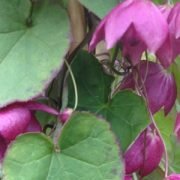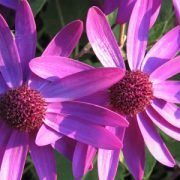What to do in your garden in Setpember
/in Garden Advice, News, Seasonal Tips/by adminSeptember is generally a cooler month than August, however it is starting off very warm and the forecast suggests it might be drier than August was. If you have been growing fruit or vegetables this year you’ll be kept busy harvest the fruits of your labour. Now is also the time to start planting spring-flowering bulbs for next year. Make sure you make the most of and sunny days and the remaining warmth while you can this month!
General
- Divide herbaceous perennials
- Harvest autumn crops
- Collect seed from perennials and hardy annuals
- Cover ponds with netting before the leaves start falling from trees
- Reduce the frequency of houseplant watering
- Clean out cold frames and greenhouses in preparation for autumn planting
- Plant spring flowering bulbs
- September can often be warm so remember to keep watering
- Keep weeding as most perennial weeds are susceptible to weedkiller this month
Fruit & Veg
- Harvest fruit and vegetables as they are ready
- Dig up remaining potatoes before slug damage spoils them
- Cover leafy vegetable crops with bird-proof netting
Greenhouse
This is the time of year to give your greenhouse and coldframes a good clean out. Once your tomatoes and other crops have finished, thoroughly cleaning your greenhouse helps prevent pests from making a home over winter. It also prepares the space ready for autumn planting.
Lawns
Trees, shrubs & Climbers
Bulbs & Flowers
Summer Symmetry
/in Garden Advice, News, Planting Designs/by adminTake a look at this month’s planting design, a great design to smarten up your garden.
August – Rhodochiton Purple Bells
/in Garden Advice, News, Plant of the Month/by adminFantastic annual climber usually available from July, will flower until first major frosts can be overwintered in a greenhouse.
Extremely beautiful rapid growing climber that starts flowering in June and continues until killed by frost. Delightful parasol-shaped fuchsia pink calyx with black/purple to crimson 2½in flowers within. Sunny pergolas, porches, walls. Flowers mid summer to autumn.
Likes full sun.
What to do in your garden in August
/in Garden Advice, News, Seasonal Tips/by adminWell July was a great month this year for being in the garden. August is, however, traditionally the hottest month so make sure you keep everything well watered, and if you’re going on holiday enlist the help of a neighbour to look after all your pots, hanging baskets and border.
Last month was very hot and dry but this month has started off with more damp weather, helping the garden to really burst to life again. Keep an eye on slugs, snails and other pests that will feast on your plants and veg of you give them half a chance.
There is lots to keep you busy this month so take a look at our August tips to help you make the most of your garden this month.
General
- Collect seed from flowering plants
- Take cuttings of lavender, keeping them well watered until they form roots, usually by Autumn. They can then be planted out in the spring.
- Keep bird baths and ponds topped up with water
- Prune rambling and climbing roses after flowering
- Pick off dead flowers to keep plants blooming
- Cut fresh herbs to store for winter
- Keep on top of pests
- Keep ponds and water features topped up
Fruit and Vegetables
- Check your courgette plants daily and pick young courgettes before they get too big
- Check your broad beans – if you can feel them inside the pods they are ready to pick
- Sow and harvest salad crops – sow beetroot, chard, mizuna, pak choi, radicchio, rocket, spinach every few weeks.
- Give tomatoes extra support as their trusses grow heavier and pinch out new growth
- Remove fruits from congested clusters of apples to encourage larger fruit growth
- Protect soft fruit from birds by covering with netting
- Your potatoes will be ready now so check on their size and if they are ready – enjoy!
- Plant out leeks
- If any of your ripening fruit has brown rot on it – pick the affected ones before it spreads to rest.
- Sow the last batch of carrots
- Feed greenhouse crops once a week
- Sow spinach for use as baby leaves in autumn
- Lift onions and garlic and allow to dry before storing in nets
Flowers
- Deadhead roses and they will continue to flower for longer
- Prune rambling and climbing roses after flowering
- Collect ripe Foxglove seeds to sow straight away
- Cut down faded delphinium and lupin flower spikes
- Sow wallflower and forget-me-not seeds in seed compost
- Order spring bulbs now
Shrubs and trees
- Trim topiary to shape with shears
- Apples, plums and cherries – for better fruit production cut back new growth with secateurs to a couple of leaves from the base
- Bush fruits – Remove old, fruited stems of blackcurrants and gooseberries, and cut back soft growth on redcurrants to 3 – 4 leaves
- Prune Wisteria
- Don’t delay summer pruning of restricted fruits
Greenhouse
- Carry on with many of the things you’ve been doing throughout July
- Stand pots on capillary matting or gravel try system to reduce the amount of watering needed
- Keep tomato compost wet, pay special attention to those being grown in bags
- Open doors and vents early on hot or sunny days (we wish !)
- Pinch off tomato side shoots
- Sow calceolaria primulus, cineraria and cyclamen
- Thin out congested bunches of grapes
- Tidy the greenhouse and clean out cold frames in preparation for next month when you’ll start to bring plants undercover.
Lawns
- Remove lawn weeds – lever them out, use compost to fill the hole, sprinkle with grass seed then cover in compost before watering
- Cut regularly
- Feed lawns to encourage strong growth
- If the weather is particularly hot and dry water lawns
Pests
- Watch out for fat, caterpillar like cutworm – either dig over the soil to let the birds at them or use a biological control
- Slugs and snails can be a real problem in this wet weather. Try beer traps to control them.
- Check for larvae on leaves and remove by picking them off or spraying with insecticide.
Need more advice? Post a question on our Facebook page or pop into the garden centre and talk to a member of our experienced garden team.
What to do in your garden in July
/in Garden Advice, News, Seasonal Tips/by adminSummer is definitely here now, and our gardens are bursting with life. If you’ve been growing vegetables and fruit then you’ll start to harvest the first of your crops this month.
You will also have to work hard again this month to keep on top of weeds and keep a watchful eye out for slugs, snails and other pests that will feast on your growing plants and veg of you give them half a chance.
Take a look at our July tips to help you make the most of your garden this month.
General
- Restrict the size of your woody trees by pruning
- Tackle bindweed before it takes over – by either digging it our, smothering it with a membrane, weedkiller or hoeing
- Pick off dead flowers to keep plants blooming
- Help sweet peas to climb by tying leading shoots to supports
- Cut fresh herbs to store for winter
- Keep on top of pests
Fruit and Vegetables
- Check your courgette plants daily and pick young courgettes before they get too big
- Check your broad beans – if you can feel them inside the pods they are ready to pick
- Sow and harvest salad crops – sow beetroot, chard, mizuna, pak choi, radicchio, rocket, spinach every few weeks.
- Give tomatoes extra support as their trusses grow heavier and pinch out new growth
- Remove fruits from congested clusters of apples to encourage larger fruit growth
- Protect soft fruit from birds by covering with netting
- Early potato varieties will be ready now so check on their size and if they are ready – enjoy!
- Bury blackberry stem tips and they will form new plants
- Plant out leeks
- Wrap celery stems in newspaper, then pile soil round them to exclude light
Flowers
- Deadhead roses and they will continue to flower for longer
- Collect ripe Foxglove seeds to sow straight away
- Cut down faded delphinium and lupin flower spikes
- Pick off faded rhododendron and azalea flower heads
Shrubs and trees
- Trim topiary to shape with shears
- Apples, plums and cherries – for better fruit production cut back new growth with secateurs to a couple of leaves from the base
- Bush fruits – Remove old, fruited stems of blackcurrants and gooseberries, and cut back soft growth on redcurrants to 3 – 4 leaves
- Wisteria – to encourage flowering and to stop rampant growth remove straggly new growth to 1 – 2 leaves from base
- Cut out old stems and prune back to strong new growth once rambling roses have flowered.
Greenhouse
- Stand pots on capillary matting or gravel try system to reduce the amount of watering needed
- Keep tomato compost wet, pay special attention to those being grown in bags
- Open doors and vents early on hot or sunny days (we wish !)
- Pinch off tomato side shoots
- Sow calceolaria primulus, cineraria and cyclamen
- Thin out congested bunches of grapes
- Move plants to bigger pots if their roots have grown out to the edges of their old ones.
Lawns
- Remove lawn weeds – lever them out, use compost to fill the hole, sprinkle with grass seed then cover in compost before watering
- Cut regularly
- Feed lawns to encourage strong growth
Pests
- Watch out for fat, caterpillar like cutworm – either dig over the soil to let the birds at them or use a biological control
- Slugs and snails can be a real problem in this wet weather. Try beer traps to control them.
- Check for larvae on leaves and remove by picking them off or spraying with insecticide.
Need more advice? Post a question on our Facebook page or pop into the garden centre and talk to a member of our experienced garden team.
Garden Style Garden Centre
/in News/by adminSet in the beautiful Loxley Valley, just above Damflask reservoir with it’s sailing facilities and only 1 ½ miles from the picturesque Bradfield villages, Gardenstyle is a unique type of Garden Centre.
It’s origins lie as a nursery, but over the years it has expanded to include not just the unusual plants and specimens for which it is renowned but also garden furniture, wild bird care, gift ideas and of course The Old Glasshouse Café. The centre boasts some fine specimen trees, shrubs and plants on several levels in landscaped surroundings. It is home to a large variety of wild birds which take advantage of the feeders located near the café. This is not a huge centre, but what we lack in size, we make up for in customer service, horticultural knowledge, inspirational ideas, and above all passion.
Opening Times – Monday to Saturday 09:00 – 17:00, Sunday 10:00 – 17:00, Bank Holidays 09:00 – 17:00, closed Christmas Day, Boxing Day and New Years Day
RHS Tatton 2013 – Best in Show
/in News/by adminLast year we’re delighted to be awarded Gold Medal and Best Large Garden at RHS Tatton Flower Show 2013!
Our landscaping team here at Garden Style were chosen to build the RHS Tatton Flower Show 2013 garden for designer Phil hurst.
The Garden designer Phil Hirst has created a garden which celebrates 100 years of steel production in Sheffield.
Sanctuary Housing Association are the sponsors for the building works.
The design by Phil Hirst
What to do in your garden in June
/in Garden Advice, News, Seasonal Tips, Slider/by adminAt last the cold weather and frosts are behind us and the garden is bursting with life. June is an exciting and busy month with a seemingly endless list of things to do.
You will really have to work hard this month to keep on top of weeds and keep a watchful eye out for slugs, snails and other pests that will feast on your growing plants and veg of you give them half a chance.
Take a look at our June tips to help you make the most of your garden this month:
General
- Plant a summer hanging basket
- Gradually lower the cutting height of your mower as grass growth increases
- Spray roses showing signs of diseases such as blackspot, rust or powdery mildew
- Apply a combined weed, feed and moss killer to your lawn if you think it needs it
- Top up water levels in pools and remove water weeds with a net
- Hoe borders on hot sunny days to remove developing weed seedlings
- Continue watering anything newly planted until it has established
- Treat problem weeds emerging in borders with herbicide
- Lightly trim new growth on box hedging
- Make elderflower cordial
Vegetables / Fruit
- Finish planting out vegetable crops, including tomatoes, beans, courgettes and sweetcorn
- Sow a few seeds of salad leaves every 2-3 weeks
- Use netting to protect developing and ripening fruits from birds
- Tie in new shoots on blackberries, raspberries, loganberries and other cane fruits
- Water gooseberries and strawberries to encourage fruits to swell
- Thin out emerging raspberry canes if they’re too congested, leaving new canes about 15cm apart
- Thin out congested fruits on apples and plums – the remaining fruits will grow far larger if competition is reduced
- Sow seeds now: lettuce, rocket, spinach, beetroot, dwarf French beans, runner beans, radish, carrots, calabrese, mini-cauliflowers, spinach, chicory, endive, kohl rabi, peas, spinach beet, swede and turnips
Lawns
- Gradually lower the cutting height of your mower as grass growth increases
- Weather permitting mow twice a week
- Trim the edges and borders of the lawn for a neat and tidy finish
- Apply a combined weed, feed and moss killer to your lawn if you think it needs it
- If any bare patches appear simply repair them with a lawn restorer product
Flowers
- Use secateurs to remove suckers growing from the stems of standard roses
- Tie tall border plants like delphiniums to their supports
- Finish planting out dahlias, cannas and summer bedding
- Cut back dead and dying foliage on spring bulbs
- Deadhead camellias and rhododendrons after flowering
- Train clematis shoots to their supports
- Finish dividing hardy primulas
- Prune early summer-flowering shrubs like philadelphus and deutzia once the flowers are over
- Sow seeds now: wallflowers, sweet Williams, Canterbury bells and forget-me-nots
Greenhouse
- Increase greenhouse shading if temperatures inside are getting very hot
- Take cuttings from houseplants
- Damp down the greenhouse floor every morning
- Water pots and growing bags daily
- Set up a ‘watering bench’ using capillary matting to look after pot plants
- Sow seeds of Christmas cherry (solanum) to grow as winter pot plants
- Hang yellow sticky traps in the greenhouse to help control whitefly
- Thin out heavy crops of peaches and nectarines, leaving remaining fruits about 10cm apart
- Repot any houseplants that are pot bound
Pests
- Watch out for cabbage pests
- Watch out for red lily beetle on the tips and leaves of lilies. Squash any you find, or spray with a suitable pesticide
- Slugs can be a real problem now, particularly on hostas and salads – use good organic slug pellets, or if you want a more natural method try beer traps
Need more advice? Post a question on our Facebook page or pop into the garden centre and talk to a member of our experienced garden team.
Garden Style Landscaping & Maintenance
Latest Blogs
 Swinton Park Hotel Natural Swimming PoolJuly 16, 2019 - 12:03 pm
Swinton Park Hotel Natural Swimming PoolJuly 16, 2019 - 12:03 pm RHS Chatsworth Flower Show 2018 Winner!June 14, 2018 - 5:41 pm
RHS Chatsworth Flower Show 2018 Winner!June 14, 2018 - 5:41 pm Winter Pruning ServiceSeptember 10, 2016 - 3:24 pm
Winter Pruning ServiceSeptember 10, 2016 - 3:24 pm A Large Formal GardenSeptember 7, 2016 - 2:02 pm
A Large Formal GardenSeptember 7, 2016 - 2:02 pm- How to choose professional landscape gardenersAugust 20, 2016 - 3:22 pm
 Wood Henge – A Landscape Garden Design ProjectAugust 2, 2016 - 3:27 pm
Wood Henge – A Landscape Garden Design ProjectAugust 2, 2016 - 3:27 pm











